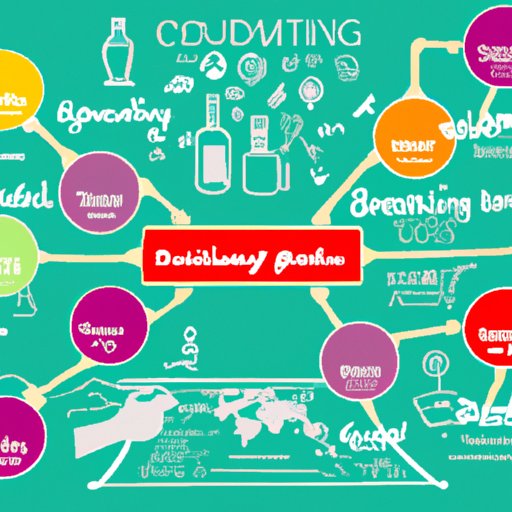Introduction
Starting your own bath and body products business can be a rewarding venture, but it does require careful planning. You need to understand the regulations and licensing requirements for your area, create a comprehensive business plan, source quality ingredients and packaging materials, develop a unique brand identity, find effective selling avenues, understand customer needs and preferences, and set a pricing structure.
This article will provide an overview of the steps necessary to successfully launch your own bath and body business. It’s important to note that this is not an exhaustive list, and you may need to consult with a lawyer or other professional to ensure compliance with all applicable laws.
Regulations and Licensing Requirements
Before you begin the process of setting up your business, you’ll need to do some research into the regulations and licensing requirements in your area. Depending on where you live, you may need to obtain permits or licenses in order to legally sell your products. Additionally, you may be subject to inspections or other regulations.
It’s important to familiarize yourself with the laws and regulations related to the production and sale of bath and body products in your area so that you can ensure compliance from the outset. Consulting with a lawyer or other professional can be helpful in understanding the legal requirements for your business.
Business Plan
Once you’ve familiarized yourself with the legal requirements for your area, it’s time to create a comprehensive business plan. Your business plan should include your goals for the business, your budget, and your marketing strategy.
Your goals should be realistic and achievable. Think about the type of business you want to run and the products you want to offer. Consider how much money you’re willing to invest in the business and how long it will take to become profitable.
Your budget should include both startup costs and ongoing expenses. Take into account the cost of ingredients and packaging materials, any licenses or permits you need to obtain, advertising and promotion, and any other expenses associated with running your business.
Your marketing strategy should include a plan for promoting your products and reaching potential customers. Consider using social media, attending craft fairs, and creating partnerships with other businesses to help spread the word about your business.
Source for Ingredients and Packaging Materials
Once you’ve established your business plan and budget, it’s time to source quality ingredients and packaging materials for your products. You’ll want to make sure you’re working with reliable suppliers who can provide quality materials at a reasonable price. Research different suppliers to compare prices and read reviews from other customers before making a selection.
It’s also important to consider the environmental impact of the ingredients and packaging materials you use. Many consumers are looking for products that are made with natural, sustainable ingredients and packaged in eco-friendly materials, so consider this when selecting your suppliers.
Brand Identity
Creating a unique brand identity is essential to the success of your business. You’ll want to come up with a name and logo that reflects the values of your business and resonates with potential customers. Consider what makes your products special and how you want to be perceived by your customers.
You’ll also want to think about how you can differentiate your products from those of your competitors. Consider the types of ingredients you use and the packaging you select to make sure your products stand out from the rest.
Selling Avenues
Now that you have a brand identity and quality products, you’ll need to decide where to sell them. There are numerous options available, including online outlets, craft fairs, and retail stores. Consider what will work best for your business and start exploring selling opportunities.
Online outlets such as Etsy and Amazon are great for reaching a wide audience, while craft fairs and pop-up shops are a good way to connect with local customers. If you’re interested in selling in retail stores, you’ll need to approach buyers and negotiate terms.
Customer Needs and Preferences
In order to be successful, it’s important to understand the needs and preferences of your customers. Take the time to do market research to identify what people are looking for in bath and body products. Consider their age, gender, lifestyle, and any other factors that could influence their buying decisions.
Once you know what your customers are looking for, you can create products that meet their needs. Focus on creating products that are unique and of high quality to ensure customer satisfaction.
Pricing Structure
The final step in launching your business is setting a pricing structure. You’ll need to calculate the cost of producing each product and determine a price point that will allow you to make a profit while still being competitive.
Consider the cost of ingredients, packaging materials, labor, and any other expenses associated with producing your product. Try to keep your prices as low as possible while still allowing you to make a profit.
Conclusion
Starting a bath and body products business can be a rewarding and profitable endeavor, but it does require careful planning. Research local regulations and licensing requirements, create a comprehensive business plan, source quality ingredients and packaging materials, develop a unique brand identity, explore selling avenues, understand customer needs and preferences, and set a pricing structure.
By following the steps outlined in this guide, you can increase the chances of success for your bath and body products business.
(Note: Is this article not meeting your expectations? Do you have knowledge or insights to share? Unlock new opportunities and expand your reach by joining our authors team. Click Registration to join us and share your expertise with our readers.)
